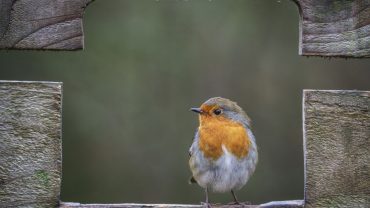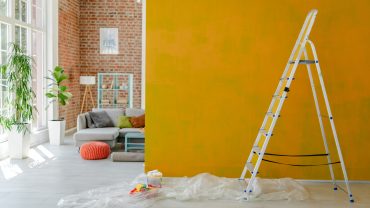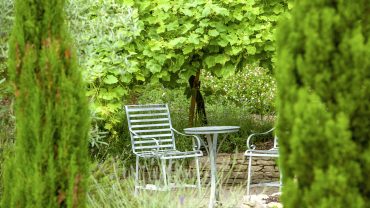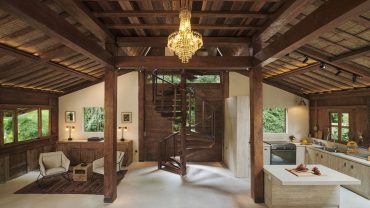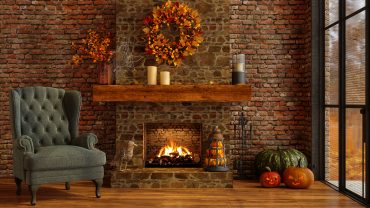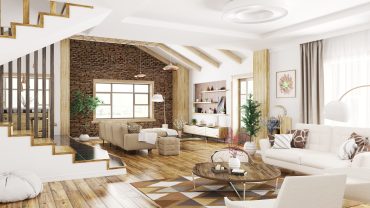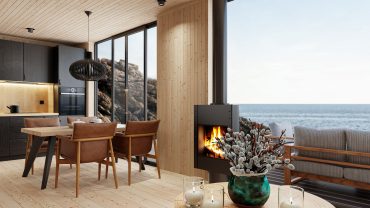The House of Tudor ruled England from 1485 to 1603, an era that encompassed the reigns of five monarchs. While often referenced as a distinct period of the country’s history, much changed over the course of almost 120 years, including the way homes were decorated.
The style known today as English Tudor interior design is rooted in the period between 1485 and 1558. The latter year marked the accession of Queen Elizabeth I, whose reign had its very own home decor characteristics.
The Tudor design period also overlapped with others, including renaissance and perpendicular gothic. So, how would one characterise English Tudor interiors? And how has that translated to modern English Tudor interior design? Let’s find out.
Traditional English Tudor House Interiors

English Tudor style houses (Credit: CBCK-Christine via Getty Images)
The Tudor era began just as the Middle Ages ended. It was a period of increased prosperity and stability, the perfect environment for a house building boom. The architecture which developed at this time might be characterised as a mix between late medieval and early renaissance as well as what is known as late gothic perpendicular style. The latter emphasised height, especially in windows and walls.
Aside from this, Tudor houses tended to have complex, asymmetrical gabled roofs, large, intricate chimneys and the iconic half-timber frontages. This sense of drama continued indoors, with grand wooden beams and panelled walls, richly textured stonework, and vast fireplaces just some of the typical aspects of English Tudor interiors. Let’s look at these features in detail.
Original Features of English Tudor Interiors

English Tudor style cottage interior (Credit: frazaz via Getty Images)
With such a strictly hierarchical society, there was no universal form of English Tudor interior design. The homes of the wealthier classes were, of course, very different from those of the poorer ones. The list that follows is a mix of the most prominent ones from across the board, including:
Colours
Tudor period interior decor predominantly utilised rich, deep colours to create a warm and inviting atmosphere. Common colours included dark greens, deep reds, and browns, often complemented by gold and black accents. These colours were used in textiles, wall coverings, and woodwork, providing a sense of opulence and depth. Lighter colours such as cream and white were also present but mainly as a background to highlight the richer hues.
Textures
Textures in Tudor homes were varied and luxurious, reflecting the wealth and status of the occupants. Heavy, embroidered fabrics like velvet and brocade were popular for curtains and upholstery. Tapestries adorned the walls, adding both texture and insulation. Wood was extensively used, with intricate carvings on furniture and panelling. Plaster and stone were also common, providing a contrast to the softer textures of fabrics and wood.
Motifs
Tudor decor featured a range of motifs inspired by nature, mythology, and heraldry. Floral and foliage patterns were common, often intricately carved into wood or woven into fabrics. Both the Tudor Rose and the Fleur de Lys were prevalent, as were geometric patterns and intricate scrollwork. Heraldic symbols and family crests added a personalised touch to the decor, often found on walls, furniture, and textiles.
Flooring
Floors in Tudor homes were typically made of wide, wooden planks or stone. Wealthier homes might feature decorative tile work, especially in hallways and kitchens. Rush matting was commonly used to cover the floors, providing insulation and comfort. In grander rooms, carpets imported from the Middle East were displayed as a sign of wealth.
Beamed Ceilings
Beamed ceilings were a hallmark of English Tudor interiors. Exposed wooden beams, often left in their natural state or stained dark, created a dramatic and rustic look. These beams were not only structural but also decorative, sometimes featuring intricate carvings and painted details.
Wall Panelling & Decor
Wooden panelling, known as wainscoting, was a prominent feature in Tudor homes. Oak was the preferred wood, richly stained and often elaborately carved. The panelling typically covered the lower half of walls, with the upper half sometimes decorated with tapestries or painted plaster. In wealthier homes, the entire wall might be panelled, providing a cohesive and luxurious look.
Stone Fireplaces
The fireplace was the heart of the home and central to English Tudor house interiors, often grand and imposing. Made from stone, these fireplaces featured elaborate carvings and large hearths. They were central to both heating and cooking, making them a focal point in the main living areas. Decorative mantles often displayed family crests, heraldic symbols, and intricate stonework.
Furniture
Furniture in English Tudor interiors was robust and heavy, predominantly made of oak. Pieces were designed for durability and functionality, with a focus on elaborate carvings and ornamentation. Popular items included large, sturdy tables, high-backed chairs, and four-poster beds with rich drapery. Storage chests and cabinets often featured intricate detailing and served as both practical and decorative elements in the home.
Modern English Tudor Interior Design

Modern English Tudor interior design (Credit: John Keeble via Getty Images)
While traditional English Tudor design ideas fell out of favour under Elizabeth I, they experienced a revival in the late 19th century. But this wasn’t an exact replica of the original aesthetic. Known as Tudor revival or mock Tudor, it tended to be a diluted version of the original, often mixed with other period styles.
Nowadays, modern English Tudor interior design is about balancing historical elements with contemporary design principles. One approach is to focus on key architectural features such as exposed beams and stone fireplaces, then build the decor around these focal points. Modern furniture with clean lines can be used to offset the heaviness of traditional Tudor elements, creating a harmonious blend. And beams and other wood parts can be replicas or made of wood of a lighter shade.
One slightly trickier area is lighting. While traditional Tudor homes relied on natural light and candlelight, this doesn’t tend to suit modern lifestyles. Modern homes can incorporate a variety of lighting sources, including chandeliers, sconces, and recessed lighting. These fixtures can complement the overall aesthetic without overpowering the historical elements.
Past and Present: English Tudor House Interiors

English Tudor style living room (Credit: frazaz via Getty Images)
As we’ve seen, English Tudor interior design has been adapted to offer a unique blend of historical richness and modern features, for spaces that are both elegant and bold. Modern Tudor interior design beautifully blends the historical richness of its origins with contemporary aesthetics, creating spaces that are both elegant and bold. This enduring style, with its roots firmly planted in the past, continues to captivate with its timeless charm and sophisticated appeal.

